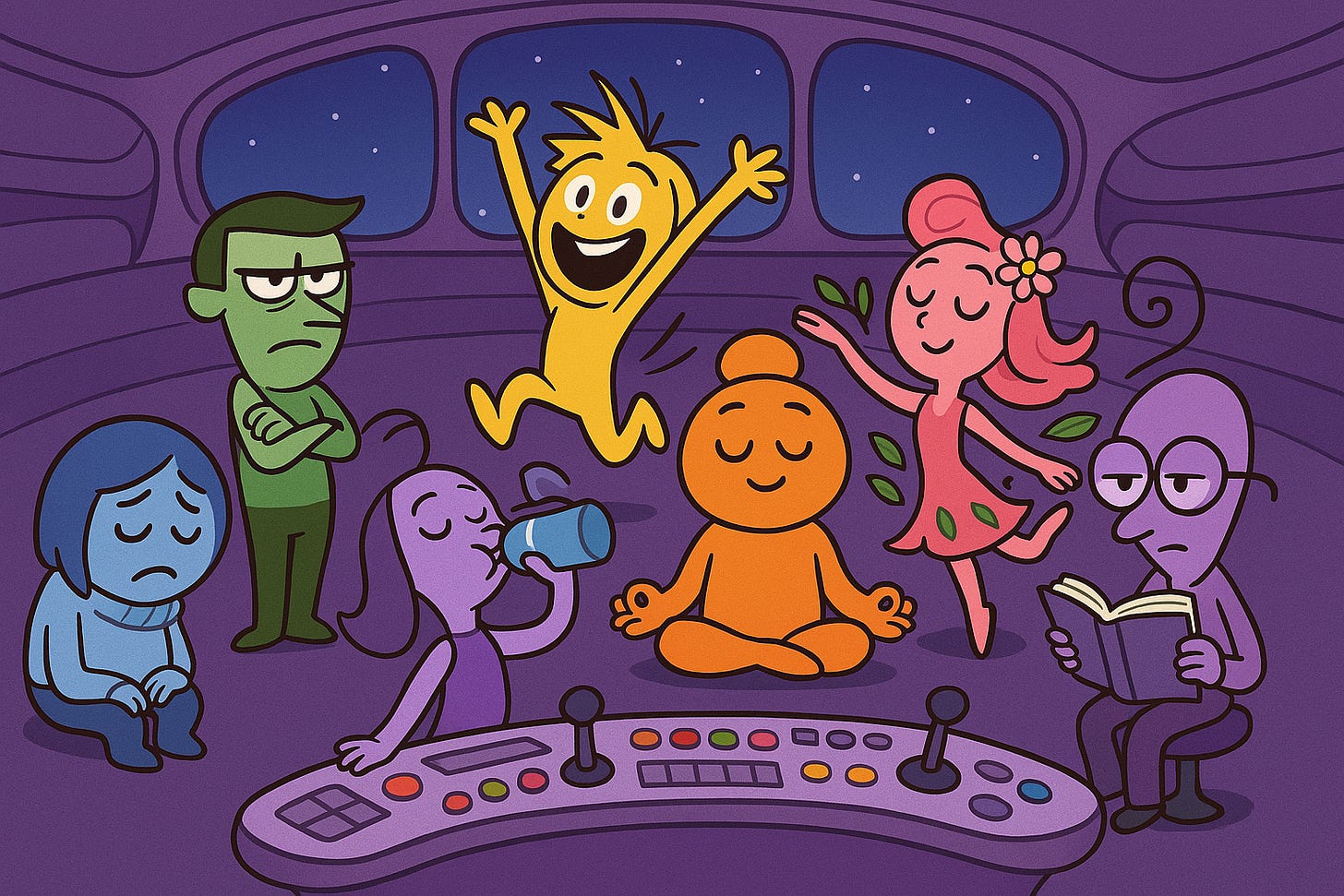Unblocking the Creative Flow
Generativity, Fear and Embodied Parts Work
“Underneath the Glitch” is now out on Amazon :) A little bit more about the story: the protagonist finds herself traversing through different levels of concrete reality, her ceaseless need to go beyond the assumptions of status quo pushing her to uncover deeper and deeper layers. It starts out as a dialogue between two scientists, the opener being inspired by Asimov’s philosophical explorations in his works.
One thing that is fun about unearthing old stories, dusting them off and having a go at them again is you get the joy of rediscovery—almost as if you were a new reader to your own writing. I suppose it’s like some kind of authorial masturbation, ha! As I explored the world of this story, I was struck by how it shared some genre-based themes with stories like Hugh Howey’s Silo. Howey did self-publish the first novelette in the series, Wool, in 2011 so I definitely could have been unconsciously influenced by it, though I was already in the midst of writing out my own short. I remember my partner coming home with a thumb drive from a singularity conference, saying, “Check this out. A guy was passing them out. It’s a story called Wool.” And all these years later, we have Silo on Apple (as well as the underrated two seasons of Beacon 23 with Lena Headey). A great example of “If you build it, they will come.”
I am so thankful to have worked through my internal obstacles. You know, those seemingly insurmountable inner impediments which can stop us in our tracks just when she begin to feel that we’re onto something good. I can still hear the fearful voice, but just compassionately let it come along for the ride now. I’ll share a bit of what it says: It’s too late. This story is old now. People will just think it’s derivative. No one cares. You will die having been ignored.
Whew! That whole stream of thought can be pretty harsh, for sure. But rather than waste bandwidth struggling against it, there’s a lot more we can do when we accept its existence and move our focus to what we want to achieve, rather than what we think is in the way. That’s a bit of parts work, like in the movie, Inside Out. I picture this inner critic as a real Debbie Downer type. But notice in that movie, no part is kicked out (impossible anyway: try not to think of a white bear, right?). Instead, I like to think about these parts as party guests who you love but are sometimes annoyed by—hand them a drink, wish them well, but don’t get trapped in their negative conversation.
On another note, I’ve had a series of physical complaints this past year—nothing serious, but a consistent inflow of them that has gotten me thinking (because I’m not that old just yet!). I’ve learned to talk to my body sweetly, to thank my sacred vehicle that carries me through life. And more than that, I am learning what it means in a felt-sense way to truly integrate mind with body. To see my body as co-pilot in this incarnation adventure. I remember being a young child so absorbed in the planet of my own body. Twisting like a pretzel in that overly flexible way of a little kid, tasting the salt of my knees and the inside of my elbows like earth itself.
I love the rush of creating with my mind, yet especially in this screen-based age, I cannot forget the body. Like an animal companion: pre-verbal, instinctual and present-moment focused; it attunes to energy and is the first to signal from our intuition. In the great upward spiral of existence, I find myself coming back into greater integration with the temple of my body. With gratitude, humility and joyful attention—amen.



